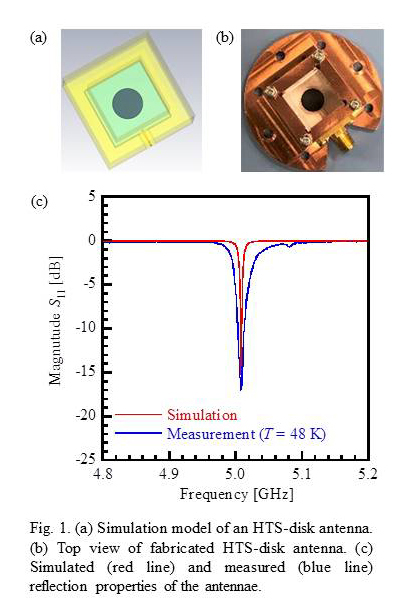ED4-3
Design and Fabrication of Microwave Transmit Antenna Using HTS Thick Disk for Wireless Power Transfer
*Atsushi Saito1, Fumiya Shimada1, Takehiro Sato1, Kazushi Kiyooka1, Masafumi Shibata2, Satoshi Ono3, Masanori Takeda4, Yuzuru Narita1, Kensuke Nakajima1
- Graduate School of Science and Engineering, Yamagata University, Japan1
- Fuji Electric Co., LTD., Japan2
- The University of Electro-Communications, Japan3
- Graduate School of Engineering, Shizuoka University, Japan4
Superconducting antenna arrays made of high-temperature superconductor (HTS) thin films have been studied because their gain increases linearly with increasing number of elements. However, the power-handling capability (PHC) of its antennas was not strong enough for the practical application of wireless power transfer (WPT). [1, 2] We studied microwave bandpass filters (BPFs) using HTS bulk resonators and reported a 100-W class of PHC in five-pole Chebyshev-type BPFs using GdBa2Cu3Oy superconducting thick disk resonators. [3] These results suggest that superconducting bulk is promising as a superconducting antenna for high-power transmission. In this study, we designed and fabricated a microwave transmit antenna that uses an HTS thick disk as a patch antenna. The frequency response of the antenna using the disk, which was set in a dielectric substrate, was analyzed using the CST studio suite. Figure 1(a) shows a three-dimensional simulation model of the antenna. The diameter and thickness of the disk were 7.50 mm and 0.5 mm. The conductivity of the disk was assumed as 5.8×1014 S/m. The size, dielectric constant, and loss tangent of the dielectric substrate were 16×16×5.5 mm3, 8.393, and 1.0×10-7, respectively. As a result, we obtained a center frequency of 5.009 GHz and unloaded quality factor (Qu) of 1941 as shown in Fig.1 (c). The simulated Qu value is very low when using a superconducting resonator, which is due to radiation loss.
Fig. 1(b) shows a top view of fabricated HTS-disk antenna. The materials for the HTS thick disk, dielectric substrate, and cavity to prepare the antenna were GdBa2Cu3Oy, c-sapphire, and oxygen-free copper. All dimensions were the same as the analysis conditions. The reflection characteristics were measured using a vector network analyzer in the temperature range of 48 K - 300 K. As a result, the reflection characteristics showed a fc of 5.007 GHz and a Qu of 405 at a temperature of 48 K as shown in Fig.1 (c) The measured fc is in good agreement with the simulated result. The details of radiation loss and other designs will be presented at the conference.
References
[1] S. Ohshima et al., IEEE TAS, 7, 3060 (1997).
[2] K. Ehata et al., IEEE TAS, 9, 3081 (1999).
[3] A. Saito et al., Appl. Phys. Express, 8, 043101 (2015).
Acknowledgements
Some of this work was performed in the clean room at Yamagata University.
